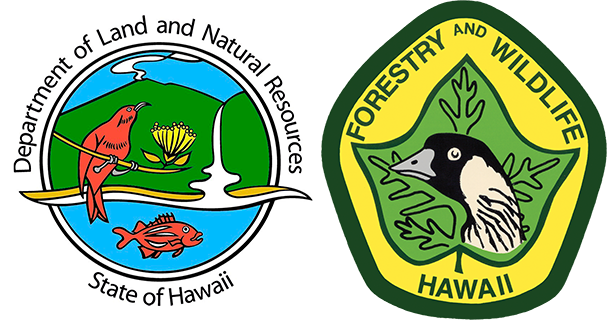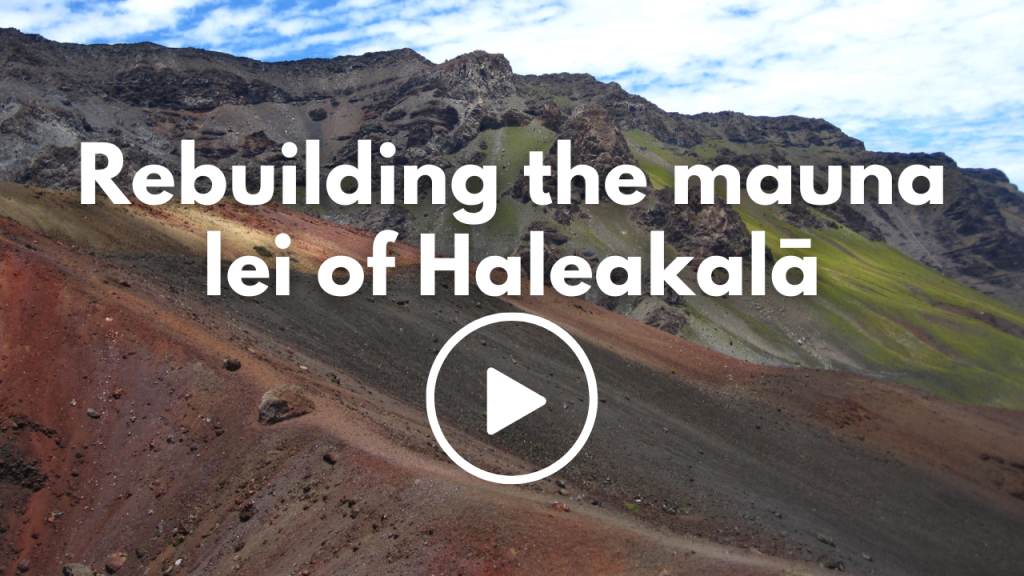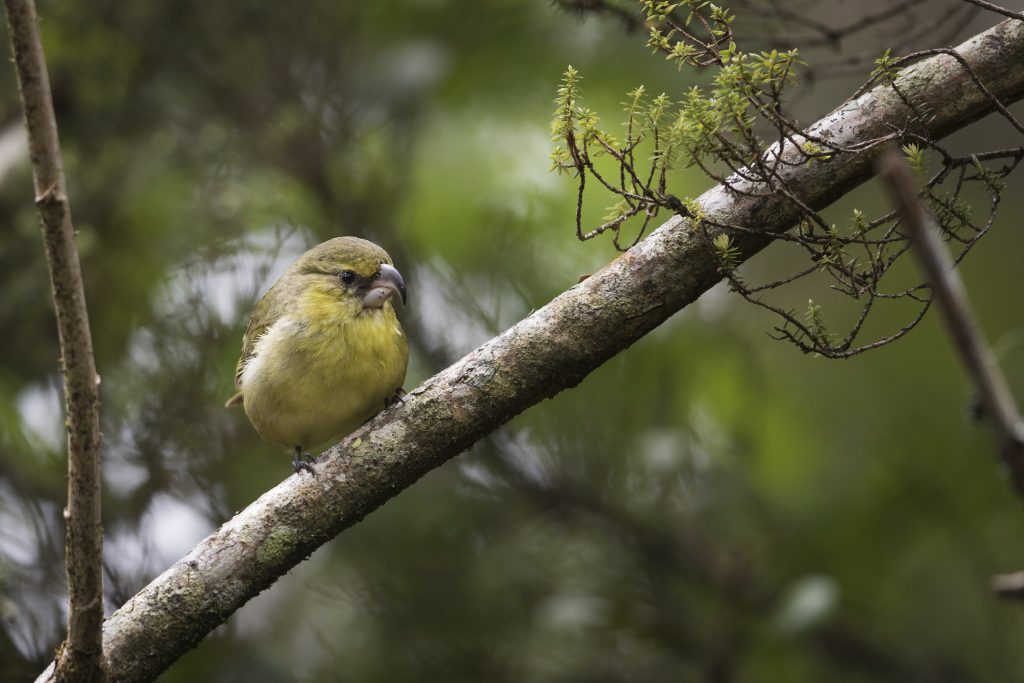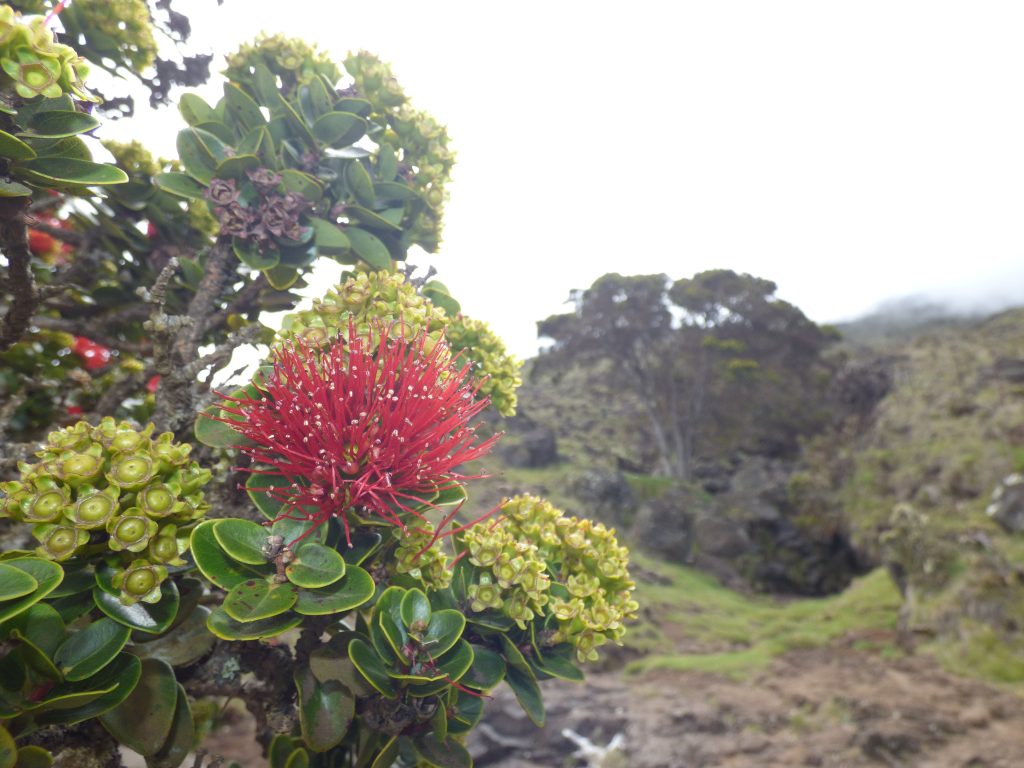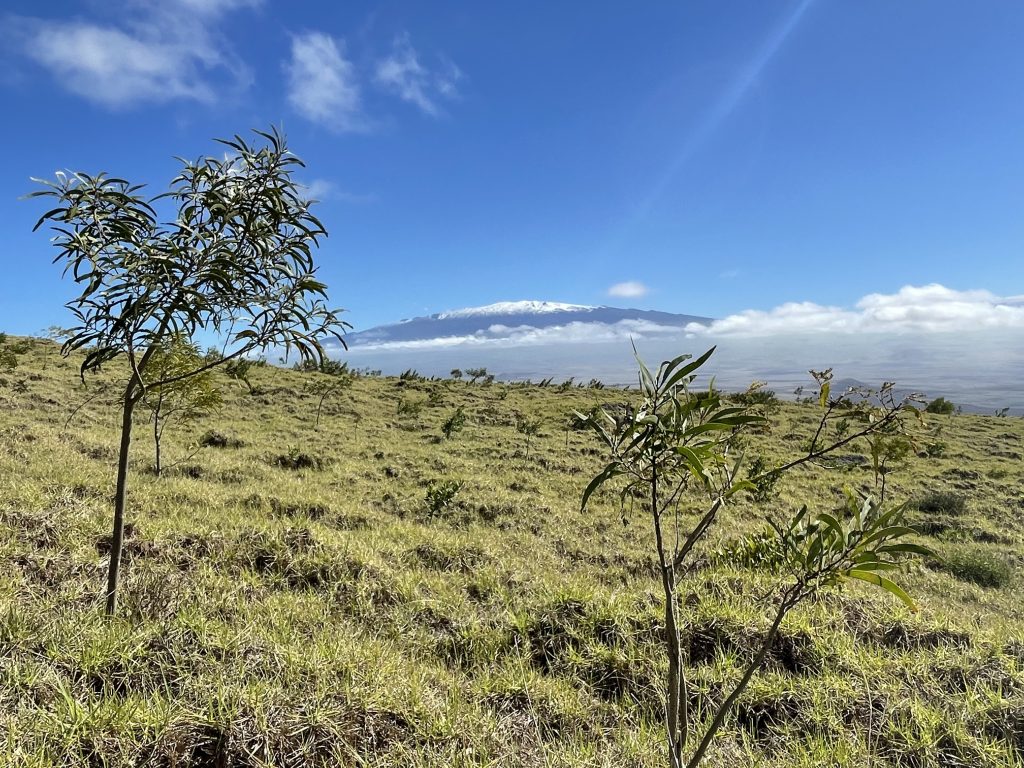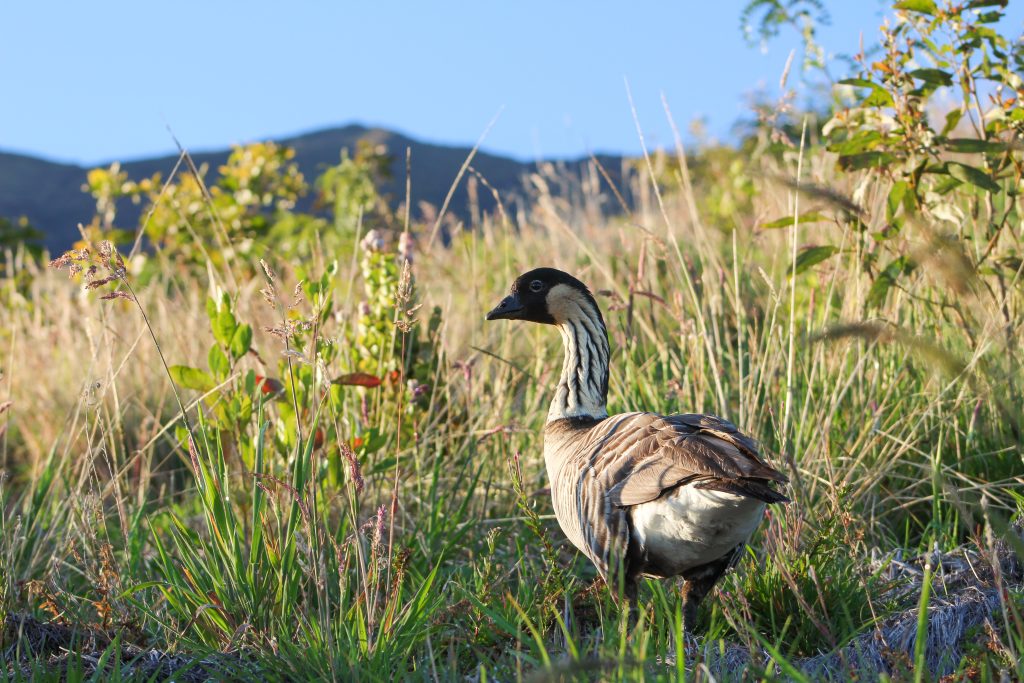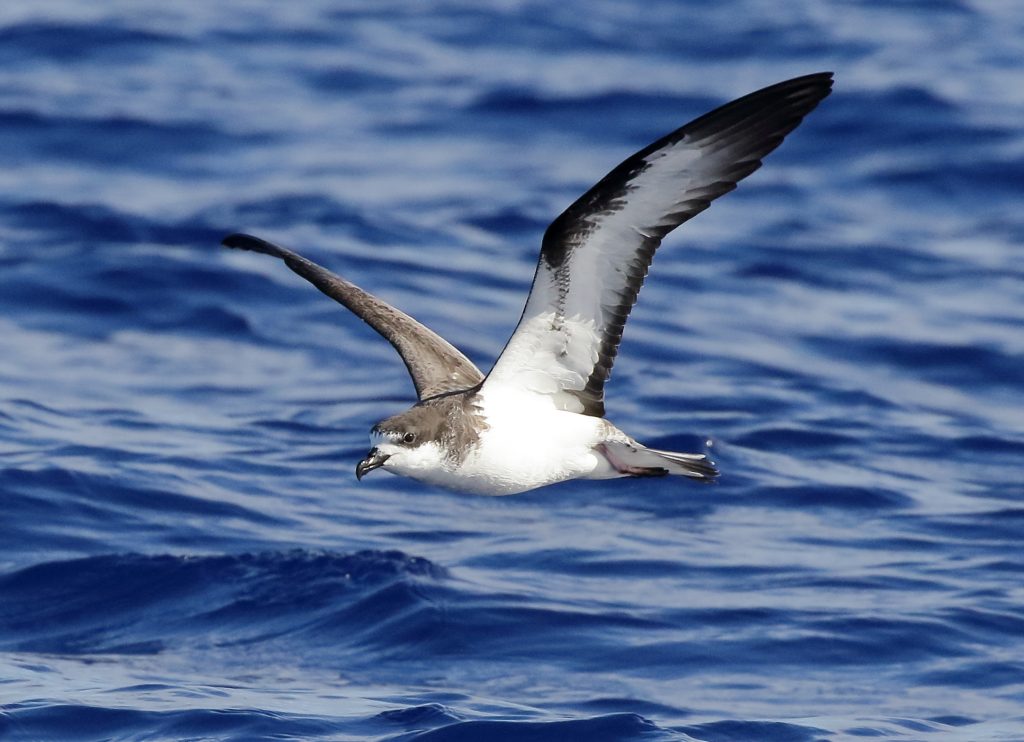Kamehamenui Forest Reserve

Kamehamenui: Restoring public lands for the people of Maui
Kamehamenui is a 3,434-acre parcel in the Kula area recently bought in 2020 as a public Forest Reserve. The property was previously owned by the Von Tempsky family, who later sold the property to a landholding corporation in the 1990s. In 2017, the property was listed for sale on the real estate market. A group of conservation partners led by the Trust for Public Land, the Department of Land and Natural Resources, and others collaborated to purchase this land on behalf of the people of Hawaiʻi rather than see the land privately developed into private residential subdivisions. The State and Federal grant funds for the acquisition were for the specific purpose of forest restoration and enhancing public access, which the DLNR must now carry out.
Restoring Maui’s Past
The State is planting a native forest on the property, which will capture rainwater to replenish and purify the freshwater aquifer. The forest will also absorb greenhouse gases, provide a home for native wildlife, and the tree’s roots will hold the soil and reduce erosion that muddies the beaches and reefs of South Maui.
For millennia, this area was a forest and shrubland including species important to Native Hawaiians for housing, canoes, and hula, including koa, ʻōhiʻa, maile, olopua, palapalai, halapepe, alaʻa, aʻe, aʻiaʻi, and koaiʻa. Then, forests in this part of Maui were cut down in the 1840s to supply potatoes to California gold rushers on the mainland. A 1962 article in the Sunday Star-Bulletin and Advertiser notes that drought in the area was likely a result of clearing away this forest. Now, Maui community groups, including keiki in local schools, will be invited to plant trees to malama aina at Kamehamenui. When the forests return, this area will provide drinking water and water for agricultural use that benefits the 170,000 residents of Maui. The Trust for Public Land estimates that 296 million gallons of water annually will be added to aquifers beneath Maui through forest restoration at Kamehamenui. These forests will provide habitat for Hawaiian birds and other forest species, including ʻuaʻu, nēnē, kiwikiu, ʻākohekohe, and ʻopeʻapeʻa (our native bat). This land will also provide opportunities to plant ʻahinahina or Haleakalā silversword. The restoration of these forests will contribute to rebuilding the mauna lei of Haleakalā. Additionally, this once privatized land will now be accessible to the people of Maui. These public lands will provide opportunities for the gathering of forest items for traditional and customary practices, as well as recreational access.
What About Ranching?
At the time of purchase by the state in 2020, the lands were being used for grazing under an agreement with the previous private landowner. If DLNR had not bought the parcel in 2020, a new owner would have been able to remove the rancher under the terms of the agreement. Instead, DLNR has been working with the rancher to reduce disruption of their operations by extending the agreement for ranching while phasing out certain areas over time, such as the mauka shrubland which is of little ranching use. This enables DLNR to restore the forest in phases, delaying impacts to the rancher for as long as practicable.
However, DLNR cannot issue a long-term grazing lease for the entire forest restoration area to a private ranching company because that is not consistent with project approvals, as a grazing lease would prohibit public access, and not allow forest restoration. Trees cannot be planted in a grazed area because cattle will trample and eat the native seedlings. A long-term grazing lease would violate the requirements from the Land Board, Legislative approvals, and result in default on the Federal grants that contributed to the purchase. The Federal funds that bought the property were awarded exclusively for the purposes of forest restoration, endangered species recovery, and public access. These public funds require opening the land to the general public, not just for the use of a single private ranching company. Conditions for the use of the grant funds include formal and legally binding deed restrictions that prohibit management of the lands for any inconsistent purposes. If DLNR issued a long-term lease to a private ranching company, this would violate the conditions of the Federal grant. Then, DLNR would likely be unable to compete for any future Federal grants to secure public access, open space, and protection of our lands and waters for all of Hawaiʻi.
There are many widespread benefits to the people of Maui from restoring this land back into a forest, where the public may once again explore and experience the area, and native Hawaiian cultural practitioners may once again gather for lei, hula, and other traditions.
Helping Maui’s Economy
Forest restoration is good for the environment and it also helps Maui’s local economy in multiple ways. Federal and private grants are providing large amounts of funding to hire Maui residents, providing meaningful jobs to do work such as planting trees and building trails. Forest restoration benefits Maui by increasing fresh water supplies, which is critical for farmers, as well as all businesses and residents on Maui. Forests even provide local food security, benefiting Maui’s fishers. Native forests absorb rainwater and hold the soil in place, keeping it on land instead of creating flash floods and mudslides into the ocean which can smother reefs for months.
To learn more about this land and the efforts to protect it, read our detailed July 2023 project update.
Forest Reserve Management Planning: A community-driven process
Planning for public Forest Reserves is a community-driven process with multiple steps to ensure the best use of public lands. After the State acquired the land in 2020, the Division of Forestry and Wildlife held three public scoping meetings to gather input from community members about what management priorities they would like to see for Kamehamenui, and what public access and recreation opportunities they desire. The meetings were well attended and provided hundreds of helpful comments to assist in prioritizing management goals.
Most community input recommended restoring the native plants and animals back to Kamehamenui. Some of the access and recreation activities that were supported by a majority of the community members commenting on those activities included archery, camping, hiking, biking, horse trails, and hunting.
A management plan is now being drafted using this community input. A Cultural Impact Assessment is also underway to understand and protect the cultural resources of this area. A complete draft of the management plan is expected later in 2023, at which time additional community input will be sought on the contents of the draft plan.
Facts About Kamehamenui
-
- For millennia, the lands of Kamehamenui supported native forests that sustained vibrant native Hawaiian communities, including such culturally important species as maile, palapalai, and olopua. These forests likely also contained koa, ʻōhiʻa, halapepe, alaʻa, aʻe, aʻiaʻi, and koaiʻa.
- Following western contact, the lands of Kamehamenui were placed into private holdings and their forests were destroyed. The widespread destruction of forests and native ecosystems throughout the Hawaiian Islands following western contact is the single most important factor contributing to the extinctions of hundreds of species and resulting in Hawaiʻi becoming the endangered species capitol of the world.
- In 2017, Kamehamenui was offered on the open market and threatened with sale and private development. A group of conservation partners led by the Trust for Public Land, the Department of Land and Natural Resources, and others collaborated on an offer to purchase this land on behalf of the people of Hawaiʻi rather than see the land privately developed. Had the Division failed to act, the lands would have been sold to private interests and most likely developed.
- On May 8, 2020, the Board of Land and Natural Resources (Board) approved the Division’s purchase of the 3,434-acre parcel at Kamehamenui, Maui, with the lands to be held in the public trust in perpetuity. In its approval, the Board required that the lands be managed for reforestation, endangered species recovery, and public access.
- On June 25, 2021, the Board approved the set aside of the lands as a State Forest Reserve, pursuant to Chapter 183, Hawaii Revised Statutes. With those decisions, the Board launched a historic initiative to restore public benefits to lands threatened with sale, development, and degradation.
- As part of its investigations prior to purchase, the state discovered a large fuel spill on the property that had gone unreported, threatening Maui’s precious drinking water aquifer. To clean up the spill, the State and the Trust for Public Land removed 13 cubic yards of contaminated soil at significant cost as part of the State land purchase.
- Lands held in the public trust as forest reserves are for the benefit of the people. Those benefits include public access, forest products, gathering and subsistence, watershed restoration, native ecosystems, cultural practice, trails and access, equestrian use, and outdoor recreation.
- To engage public participation in planning and management, the Division has launched a community-based planning process, convening workshops and receiving comments and input. That process is in progress. So far, public support for the management plan and public benefits has been overwhelming, with hundreds of comments received.
- The plan will provide for responsible stewardship and responsible management to prevent overuse and unacceptable impacts to resources and communities.
- Use of targeted grazing can be an effective tool to aid in suppression of fire and invasive species. However, issuance of a long-term grazing lease for the entire mesic forest restoration area to a private enterprise is not consistent with project approvals. A grazing lease would preclude public access, public benefits, violate the terms and conditions set forth by the Land Board, and result in default on the Federal grants that contributed to the purchase.
